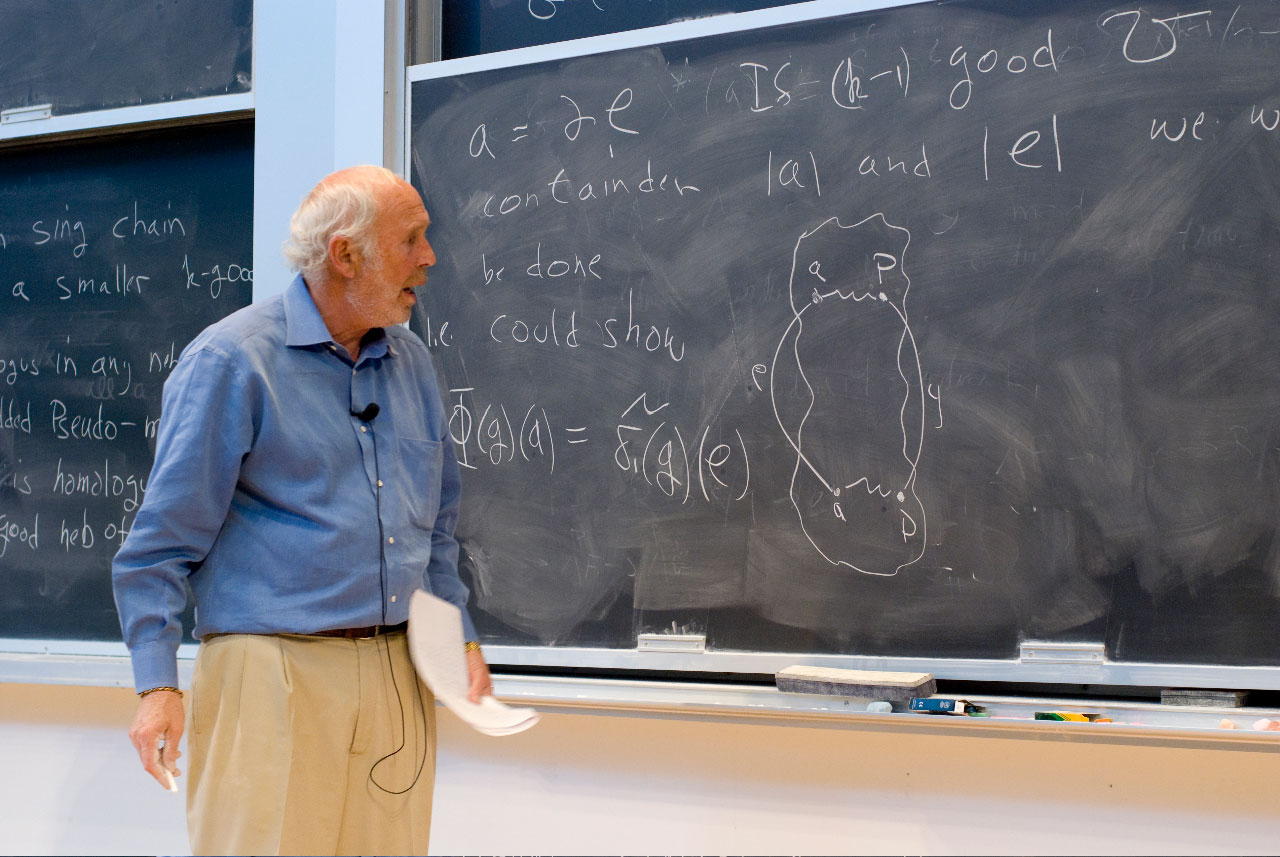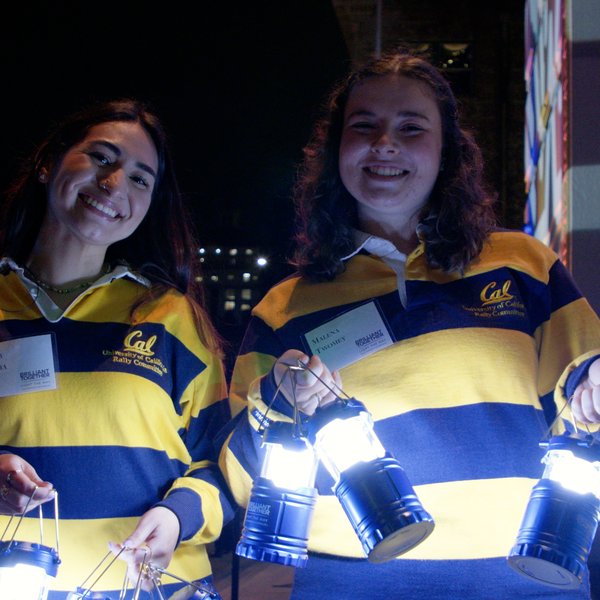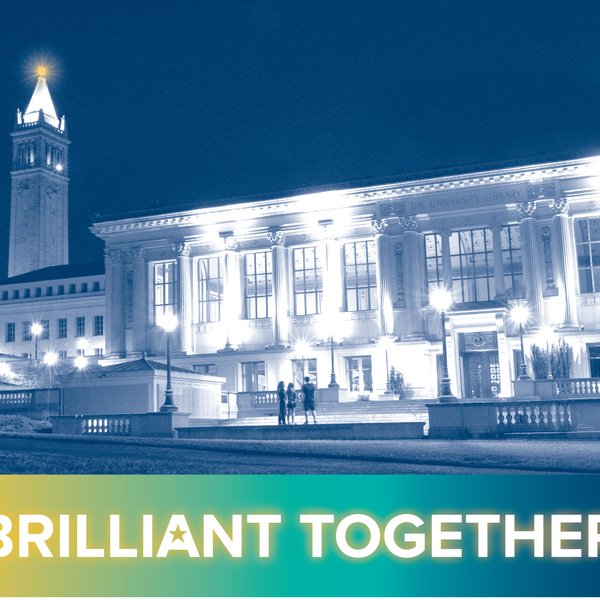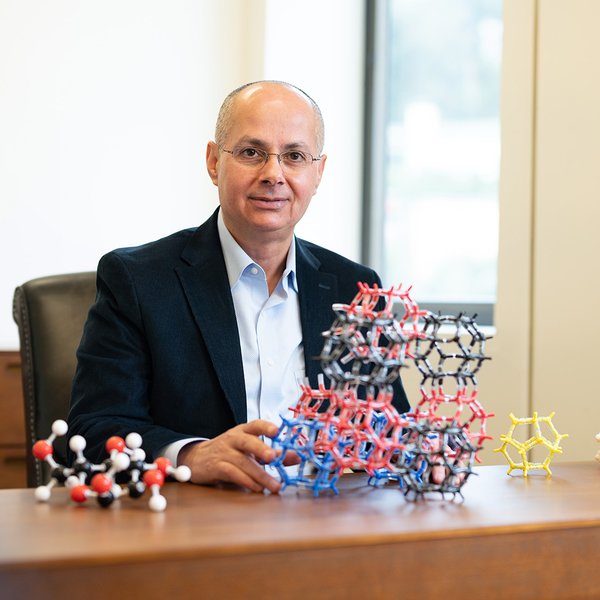
Jim Simons Ph.D. ’62. Photo: David Eisenbud
James “Jim” Simons Ph.D. ’62 never wanted to be a fireman or a football star. Even as a child, he loved math. “I liked continually multiplying things by two, although by the time I got to 1,024, I’d had enough,” he said in a video by Numberphile. The same impulse that rendered him bored at 1,024 has drawn him down a lot of paths — leading him to becoming Berkeley’s 2016 Alumnus of the Year.
Simons earned his Ph.D. at Berkeley in mathematics at age 23, then started teaching at MIT. A few years later, his life took a left turn when he began cracking codes for the Pentagon. Appalled by a 1967 New York Times Magazine article that talked about how great things were going in Vietnam, he wrote a letter to the magazine that disagreed — and, unsurprisingly, lost his job soon thereafter.
Simons reentered academia as the chair of mathematics at Stony Brook University on Long Island. While there, he and Berkeley’s Shiing-Shen Chern co-published what is now called the Chern-Simons Invariant, an early proof defining the inextricable link between physics and geometry that has since had an immeasurable influence on theoretical physics.
Simons soon reached 1,024 again and left academia in 1978 to start what became Renaissance Technologies, an early pioneer in quantitative trading. “We didn’t hire anyone who had worked on Wall Street before,” he told California magazine. “We hired people who were very good scientists but who wanted to try something different. And make more money if it worked out.”
It worked out: He managed one of the world’s most successful hedge funds and has been called “the world’s smartest billionaire.”
Seven years ago, Simons started navigating his latest left turn — into retirement and philanthropy. He and his wife, Marilyn, oversee the Simons Foundation, which has invested millions in math and science research and education, including groundbreaking work in the study of autism. In 2012, the foundation established Berkeley’s Simons Institute for the Theory of Computing, which brings top researchers from multiple disciplines together to explore the nature and limits of computation.
In 2012, the Simons Foundation established Berkeley’s Simons Institute for the Theory of Computing, which brings top researchers from multiple disciplines together to explore the nature and limits of computation.
Family traditions
Simons has clearly influenced his family. His daughter, Liz ’82, told California magazine, “When I was growing up, he made sure we all understood the importance of thinking about other people.” She and her brother Nat ’89, M.A. ’94, as well as their respective spouses, Mark Heising ’80, M.S. ’83 and Laura Baxter-Simons ’89, M.A. ’94, support a range of Berkeley causes, including nanosciences, physics, solar energy, journalism, and early childhood care and education. And granddaughter Caitlin Heising supports the greater good by working at a San Francisco human rights organization.
Among Simons’s other grandchildren, Matthew Heising is a graduate student in astronomy at Harvard. High school junior Evan Simons shows a penchant for business: His first business deal was renting a tie to his grandfather for a wedding. And Alison Simons, a high school senior and self-described “math person,” recounts her grandfather’s captivating explanation of the fourth dimension: He used various measurements of a circle, an appropriate symbol for a man whose many left turns have always revolved around a strong center — math.
Congratulations!
UC Berkeley and the Cal Alumni Association congratulate the recipients of the 2016 Achievement Awards, which will be presented at the Berkeley Charter Gala in May.
- James “Jim” Simons Ph.D. ’62, Alumnus of the Year
- Michael G. Harris ’64, M.Opt. ’65, O.D. ’66, M.S. ’68, Berkeley Founders Award
- Randy Schekman, Fiat Lux Faculty Award
- Bruce Beasley M.A. ’62, Ginger Ehn Lew J.D. ’74, and Johnathan Rodgers ’67, Campanile Excellence in Achievement Award
- Benito Delgado-Olson ’07 and Connor Landgraf ’13, M.Eng. ’14, Mark Bingham Award for Excellence in Achievement by Young Alumni




